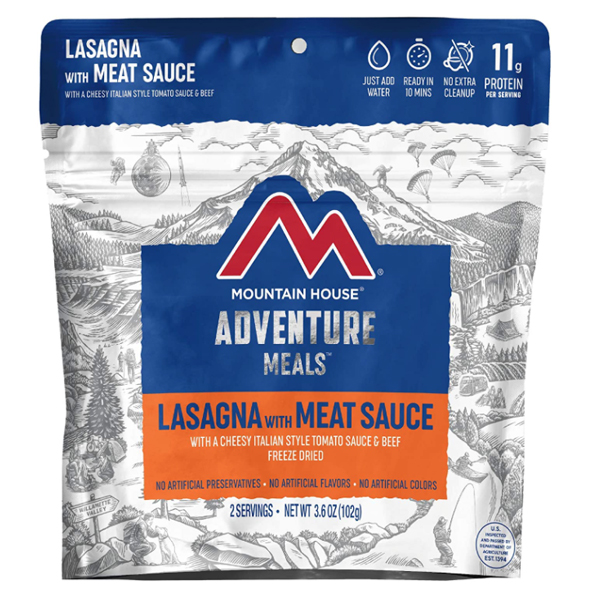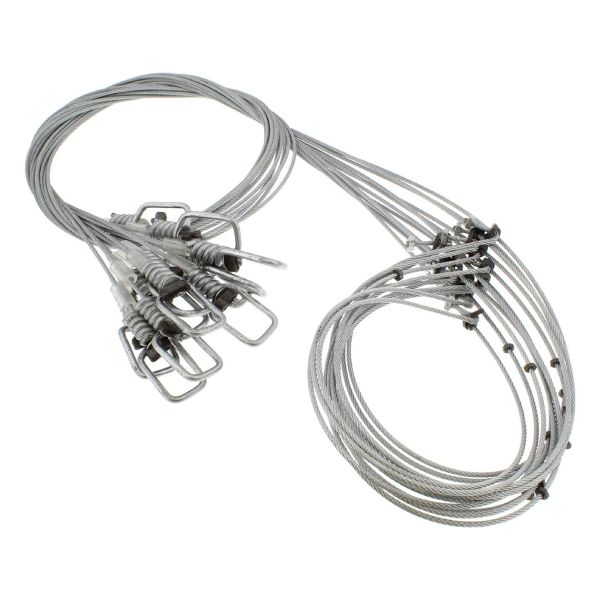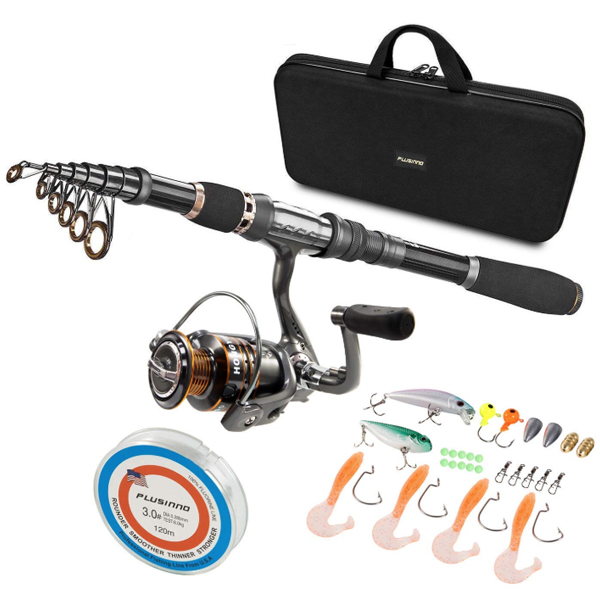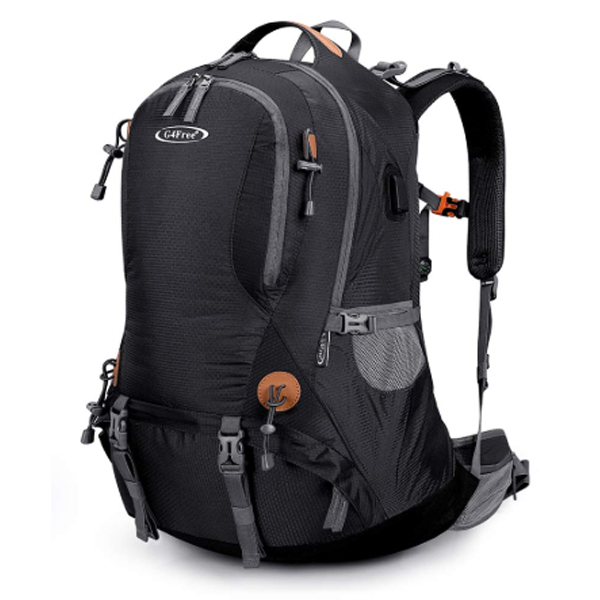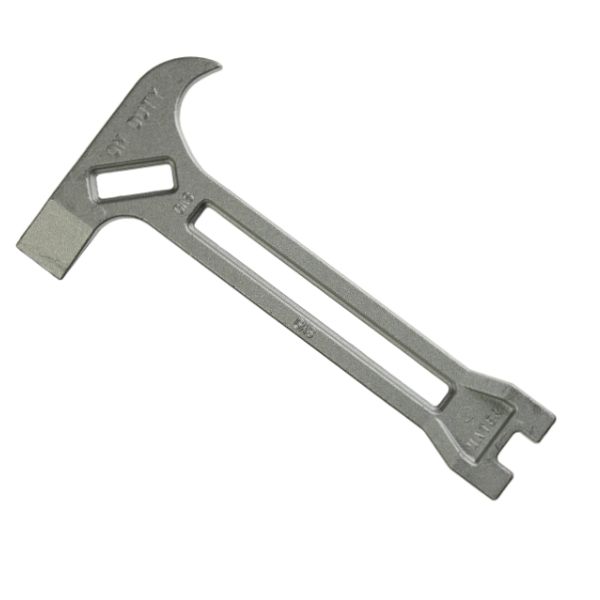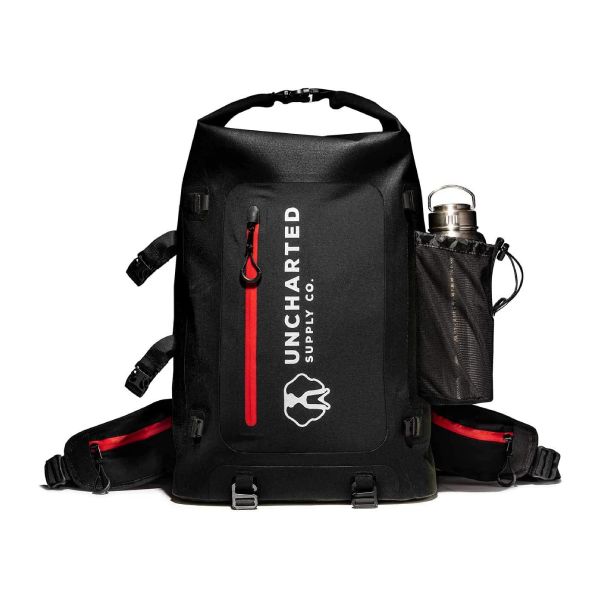Complete Guide to Emergency Food Storage and Food Production
Food Storage Brings Peace of Mind
Few natural sensations are as debilitating as the feelings of hunger. I've read the statement that the human body can last 3 weeks without food. What a nightmare! We never want it to get that bad. Let's explore the principles of emegency food storage and production so we never have to know that kind of hunger.
The principles of food storage promise peace of mind and security during an emergency situation. Becoming self sufficient in food production can make that peace of mind a long-term lifestyle.
Author Note: I'm a Mormon
Let me start out with a quick note about the primary author of this article: I'm a Mormon (member of the Church of Jesus Christ of Latter-Day Saints). If you don't already know, Mormons are urged to be self sufficient and adopt a "Provident Living" mindset from the time we can talk. Planning ahead, storing emergency stashes of food, preparing for emergency, and growing a garden are activities most of us do naturally. That said, I'm by no means an expert so we'll include research from multiple sources and non-LDS opinions in this article.
Our objective as a prepper is to protect and provide for ourselves and those important to us. We believe that in order to do that we need to have food on hand for and extended period of time as well as having the skills and resources to produce more food.
About This Article
Content:
Scope:
Difficulty:
Table of Contents
- Introduction
- Food Storage
- Food Production
- Heirloom Seeds and Crops
- Hunting and Fishing
- Insects
- Wild Game
- Fishing
- Conclusion
Food Storage
Food storage is the stockpiling of food for a period longer than what a household might consume in a week or two. It requires some foresight to set aside a budget to build up the food stock.
Resources: Mormon's Preach Emergency Food Storage
The Church of Jesus Christ of Latter-Day Saints invests a tremendous amount of resources into producing, transporting, and storing food as a church. It urges its members to follow suit and store a supply of food storage.
The Church was inspired to create a "Bishop's Storehouse" concept. From the Church's website: "The bishop has the responsibility to care for the poor and needy within the boundaries of his ward. One resource available to accomplish this task is the bishops’ storehouse—a place where those in need can go to obtain food and other supplies at the recommendation of their bishop." The church dedicates many millions of dollars per year to feeding and supplying those in need.
Members are urged to first establish a 3-month supply of food. The goal is to store longer-term food as well for up to a year per household. Cans of grain, oats, potatos, dried milk, sugar, etc. can be purchased and stored for decades. We regularly rotate the food into our day-to-day meals to keep the long term food fresh.
I grew up with a room in the basemen of our home called the 'storage room'. We had food and supplies there that would last for at least a year. There was great peace of mind growing up because we knew we wouldn't go without if something happened to our family income or an emergency happened.
How Much Food Should Your Household Store?
Some organizations recommend a few days of extra food. The federal government suggests a 3-day supply of emergency food at minimum. Some see a 3-month store of food as a great starting point. Imagine how durable our society would be if every household had 3 months of supplies on hand. Some target 1 year as the goal. The food includes all the nutrients needed to sustain healthy life, including water.
Because we're preppers, we think 3 days is a very short survival window. We're going to assume the Mormons are on to something with their time frames. Storing 3-12 months of food is the objective. How do I get there?
Start by setting a goal to get to 1 month of food per person in your household. Once you have achieved that goal shoot for 3 months. Keep storing until you get to 12 months.
Types of Food to Storage
Should your food storage be all raw foods? Should it be dehydrated meal pouches? We've managed our food storage for years and have found this to be the best combination of food:
- 3 months of day-to-day food
- 3 months of canned food or dehydrated meals
- 6 months of grains, beans, potatos, oats, sugar, etc.
Principles of Food Storage
Building up a stock of food requires some discipline and budgeting. Most households can't go down and buy a year's worth of food in one setting. Here are some principles to building up your storage.
- Set a goal - If you want to build up 3 months of food storage, set a goal to get to one by a certain date. Once you achieve the goal, work on month two.
- Live within your means - every household brings in a certain amount of income. Responsible budgeting means we can't spend more than we bring in. We need to plan to live at or below our income level. That means we may need to forego things we want for things we need.
- Be disciplined - Seeing extra food in the pantry or storage room can be tempting. Remember, that food is for an emergency - don't use it unless you have more food to replace it.
- Set a budget - If you build your storage over time it actually goes quickly. Every month set an amount of money to spend on extra non-perishable groceries or bulk food (i.e. grains, oats, etc.) Dedicate a location (pantry, storage room or closet, cupboards) as off limits and store the supplies there.
- Do some research - Learn how to manage and prepare your food for consumption when the time comes:
- How do you grind wheat?
- How do you prepare raw beans?
- How do you cook oats?
- Which type of rice stores the best?
- Etc.
- Rotate your stock - Long term food can last for decades if packed correctly. However, there's no reason to let it expire - ever. Once you hit your quantity goal, work the oldest food into your daily meals and replace it with newer food.
- Practice using the food - Be sure you know how to use the food you store. A little trial and error goes a LONG way.
- Do you know how to make bread out of whole wheat?
- Do you know how to make chilli out of beans?
- Do you know how much water to add to dried milk?
Food Storage Quantities and Phases
Ask yourself how long you'd survive with the non-perishable supplies you have on hand if an emergency happened tomorrow. What if you lost your job (no income), got injured, a major pandemic occurred, a massive terrorist attack happened, your home was destroyed by a storm, or zombies began to take over - how long could you and your household last? Would you have enough food for a month? How about water - do you have a week's worth on hand?
We believe we should have enough emergency food supplies to survive for 1 year.
If we're really prepared we can survive indefinitely but for beginners, 1 year is a great goal. This list is based on the "Prepping for Beginners" article that suggests timelines for acquiring prepper supplies, cash, gear and first aid.
We suggest setting aside a monthly budget to purchase items. Check off the items in the list as you go.
Here are the recommended steps/goals to getting prepared with food supplies:
1 Month Survival
- Water - Buy a basic portable water filter.
- Water - Buy a 5-gallon jug for portable water transport. Fill it.
- Water - Buy a 5-gallon jug (2 total) for portable water transport. Fill it.
- Food - Store 1 month of day to day food to your pantry for each person on the household. Focus on canned foods, beans, rice, pasta, etc.
3 Month Survival
- Food - Store 1 month (2 total) of day to day food to your pantry for each person on the household. Focus on canned foods, beans, rice, pasta, etc.
- Food - Store 1 month (3 total) of day to day food to your pantry for each person on the household. Focus on canned foods, beans, rice, pasta, etc.
- Food - Buy 1-year supply multi vitamins for each person in the household
6 Month Survival
- Food - Store 1 month (4 total months) of just-add-water dehydrated food pouches to your pantry per person.
- Food - Store 1 month (5 total months) of just-add-water dehydrated food pouches to your pantry per person.
- Food - Store 1 month (6 total months) of just-add-water dehydrated food pouches to your pantry per person.
1 Year Survival
- Food - Store 1 month (7 total months) of raw/long-term food to your pantry per person. Consider:
- Beans
- Rice
- Oats
- Pasta
- Wheat (you'll need a grain mill/grinder)
- Sugar
- Salt
- Dried Milk
- Dehydrated Vegitables
- Food - Store 1 month (8 total months) of raw/long-term food to your pantry per person.
- Food - Store 1 month (9 total months) of raw/long-term food to your pantry per person.
- Food - Store 1 month (10 total months) of raw/long-term food to your pantry per person.
- Food - Store 1 month (11 total months) of raw/long-term food to your pantry per person.
- Food - Store 1 month (12 total months) of raw/long-term food to your pantry per person.
Long Term Means Non-Perishable
It's not uncommon for preppers to have sealed cans of wheat, oats, rice, sugar, pasta, dried fruits, etc onhand. The goal is to have food that will maintain its nutrient value and not spoil for decades. That means no perishables are included. Do some research to learn how to buy or can your own long-term supplies.
Food Storage Products
Mountain House Emergency Food Pouches - 2 Servings
Emergency dehydrated food storage 2 servings
Buy on AmazonFood Production
While food storage is a great concept, not all emergencies allow us to have access to it (i.e. evacuation or outdoor survival). Sometimes you need to produce your own food.
Some food production methods can produce food immediately. Some require patience and skill.
We've found that producing food in a number of ways at a time produces the best yield. Set some snares, set your fishing line, carry a bow and arrow or gun, forage for known plants, etc. Check the set items regularly between foraging outings.
Let's go through the various survival food production options.
Foraging
Calories and nutrients can be found in a lot of wild plants. However, some are poisonous and can make your situation worse.
Many berries, roots, bark, grasses can be eaten. Knowing which ones is the key. Here's what you need to do:
- Buy a book (we recommend the following SAS Survival Handbook)
- Research plants around you, just in case you get caught outdoors
- Carry the book with you when emergencies occur
As Scouts we've eaten raspberries, gooseberries, huckleberries, wild potatos, wild asperagus, and more.
Experience: Huckleberries in Bear Country
On a late-summer campout with the Scouts we visited a mountain lake in Northern Idaho. We set up camp and went down to the lake shore to plan out the next day. The boys wanted to hike around the lake so they could pick huckleberries on the sun-facing hillside. One of the boys pointed to the hillside to show the other boys. They all stopped short - there was a black bear hutched over right in the middle of the huckleberry patch.
We opted not to go up that night and kept the bear spray nearby that night.
The next day the bear was gone. We hike the trail up to the patch and quickly realized why the bear was there. The berries were ripe and very pentiful. We ate until we thought we'd be sick. What a crop!
In the recommended survival handbook we noticed something (yeah, we read it cover to cover). The book gives you a method to test plants before you eat them. If you don't know what the plant is, there are some techniques to see if it will affect your body negatively.
Foraging for Beginners
Hunting
Hunting wild animals (small game or big game) can yield rapid results. Some areas have birds, rodents, large game, etc. You can trap, shoot, strangle, stab or hook many of them if you know what you're doing.
Insects
My wife is TERRIFIED of this prospect...insects may be the best source of protein in a survival situation. They are typically plentiful, they are packed full of nutrients, and most are edible.
Experience: Grilled Grasshoppers Are Kinda Like Popcorn
I spent 2 years in Mexico City as a missionary for the Church. We ate so many things I would never consider in the US. We ate liver, pig's feet, tripe, cow brain tacos, pig snout, fish eyes, cactus, and more. However, none of it was as memorable as eating grasshoppers.
One day my companion and I were walking by a school. It's not uncommon for street vendors to sell small bags of food (pumkin seeds, popcorn, snacks, etc) to the kids. However, this vendor had a large bowl-shaped grill with a fire underneath. My companion got excited and ran to the vendor. The man took out a bin full of live grasshoppers. He opened the lid and dumped dozens onto the grill and quickly covered it with a lid. We could hear the hoppers bouncing around like popcorn. As soon as they all were done hopping, he lifted the lid and stirred them around like you would stirfry. Once they were browned he dumped them into a small plastic bag (like you would popcorn) and poured Valentina hot sauce on top.
My eyes must have been huge because they kept looking at me and giggling. I could barely handle the anticipation of what I was going to have to do.
The vendor exchanged the grilled hopper snack bag for a peso and my companion grabbed a handful and popped them in his mouth. I was dreading his next words, "have some!"
I froze and then took one off the top. I looked at him, the vendor, and the small audience of children who had gathered to watch the gringo eat bugs. There was no escape. I popped it in my mouth and started to chew. The taste wasn't bad and the texture was manageable, except for the legs. They were hard to chew and got caught in my throat. I finally got it down. What a spectacle I must have been.
There are companies out there dedicated to producing insect-based foods. One report suggests that the rapid population growth on Earth will require insect production for key proteins. Insects require fewer calories per pound of food than large animals and they are easy to cultivate. They have insect burgers and other formats.
With a rapidly growing population, it's not unrealistic to assume that insect protein will be a major staple in the future.
Wild Game and Birds
In many parts of the country there are a large number of animals. Some don't hibernate so they're available year-round. We're going to highlight some of the hunting techniques we found in the SAS Survival Handbook recommended earlier.
Snares and Traps
The 4 rules for setting a trap:
- Avoid disturbing the environment so the animal is unsuspecting.
- Hide your scent as much as possible because animals tend to have a great sense of smell.
- Camouflage your trap.
- Make sure the trap is strong enough to hold an animal fighting for its life.
Learn to set a snare trap from basic gear. The videos below illustrate how to set and bait basic traps.
Archery
A primitive bow and arrow can be used to acquire much needed protein in a survival situation. While traps are a passive method of hunting, archery requires finding game and sneaking up on it and then accurately shooting it with an arrow. A bow is relatively easy to make with a knife and paracord. A little practice can help you dial in your shot.
Shooting an animal can be a challenge - even in the best of circumstances. Avid archers hunt annually with the best gear and may or may not find success. Shooting an animal with a primitive bow without spooking it first is even more challenging.
We recommend starting with snares and setting a fishing line before actively hunting. However, we recommend employing as many methods of food production as you can without expending too much energy.
Firearms
Hunting with a firearm is the easiest method to shoot and kill game in a survival situation. Pistols are somewhat effective because they have a very short accuracy range. Rifles are very effective.
The caliber of bullet makes a difference as well. .22 bullets are very small and work effectively on small game like rabbits, squirrels, etc. They can even work on an animal as large as a deer if the shot is placed correctly. Larger calibers are better for deer, elk, moose, etc.
Survival Hunting Products
550 Paracord with Integrated Fishing Line, Wire, Tinder
Enhanced milspec type 3 550 SurvivorCord for survival
Buy on AmazonKa-Bar Fixed Blade Knife
Sturdy, mid-priced, full-tang field knife for multi-purpose survival
Buy on AmazonField Master Swiss Army Knife
Best Swiss Army Knife for emergencies and EDC - light weight folding multi-tool that covers everything
Buy on AmazonFishing
Fish are a great source of protein. They're pretty easy to clean, cook and very healthy. Fishing comes with challenges though:
- In the best conditions catching fish can be time consuming and unsuccessful. In bad conditions (i.e. cold winter day) it can be very frustrating and unfruitful.
- You have to have bait. Sometimes it might be as productive to eat the bait as it is to waste it fishing.
- Fishing gear can be hard to maintain.
We recommend fishing but only as long as it's providing results. If you aren't catching fish, leave your hook baited and leave it as a passive method while you forage, hunt, or trap. Don't waist time and precious calories watching your hook if nothing is happening.
Other recommendations:
- You can find bait nearly anywhere there are bugs
- Fishing is passive so set your line and go do something else. As long as your line is strong enough the fish will be there later when you check the line.
- Carry the right bait and gear for your area in your go bag.
Survival Fishing Products
Speedhook Fishing Kit
Survival springloaded fishing kit originally designed for the military
Buy on AmazonHeirloom Seeds and Crops
We like the idea of gardening your own food. In a long term survival situation the ability to farm high-calorie, highly nutritious plants can make survival a long term prospect.
The movie "The Martian" depicts Matt Damon farming potatos to survive on Mars. He has a controlled environment where he can produce water, fertilize the sterile martian soil with human feces, and plan potatos they had planned to eat for Thanksgiving. The calories in potatos go a long ways, especially when combined with proteins.
Experience: Mom's Garden
Growing up we always had a garden. We were required to plant, till, weed, fertilize, and water the crops. We never produced enough to sustain our whole family just off of the crops but we did have a pretty decent yield.
Mom would have us plant potatos, corn, zuccini, peas (always eaten off the vine), and more. We'd spend entire evenings as a family learning to raise the crops.
The best way to learn to raise crops is to practice. If you have land, dedicate a portion to a garden. If you don't, buy a planter and raise some small flowers or edible plants, just for practice.
Experience: Father-in-Law's Garden
My father-in-law is a rancher. Anything he touches grows. His garden is no different. Even the animals liked the crops. He had a bandit stealing corn every night so he set up an eletric fence around the garden. One summer night I was wandering around the yard while on the phone. I saw a skunk waddle over to the garden. Suddenly, I heard "ZAP, ZAP!!" A vulger smell followed.
That poor little skunk went in to raid the corn again and touched that electric wire with his nose. In shock, he instantly released his defense valve and sprayed the whole area. We ended up losing part of the crop because the smell never left the plants. Maybe we should have let him have his take.
In a survival situation you don't want to have to learn how to raise crops. Practice before with your family or household. In an emergency, you'll be thankful.
Heirloom Seeds
Many normal seed companies protect their sales by breeding seeds that grow for only 1 year. Heirloom seeds can be reharvested year after year. The key is to collect seeds at the right time for next year's crop.
If you buy seeds for survival, buy heirloom.
Emergency Gardening Products
Gardening for Beginners
Feed the Attitude
Imagine an emergency where communities make a run on stores and there are widespread shortages - think COVID-19 toilet paper shortages but across all groceries. Can you imagine what it would mean to your household to have food ready to eat for a year with the capability of farming more? What a sense of relief to be able to feed your household for a long time.
We recommend in our emergency essentials checklist that you carry fishing gear, hunting snares, paracord to make a bow, etc. We urge you to take your essentials kit with you into the outdoors and other settings.
Begin preparing your food storage and food production gear today.
1This post may contain affiliate links. If you make a purchase, I may earn a small commission at no additional cost to you.
2 As an Amazon Associate we earn from qualifying purchases.
3 Most reviews are based on personal experience from one of our content editors. Some are based on research and the opinions of other reviewers.





